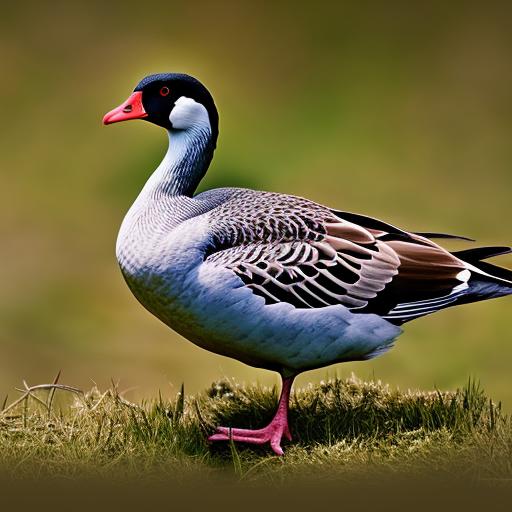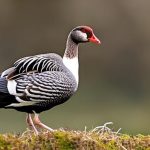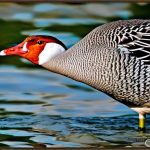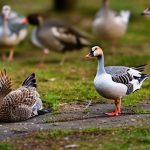Geese infestations can be a major problem for many homeowners and property owners. These birds can cause damage to lawns, gardens, and property, as well as create unsightly messes with their droppings. Finding effective geese repellents is crucial in order to prevent these issues and maintain a clean and safe environment.
Geese are attracted to areas with ample food sources, open spaces, and bodies of water. They are known to congregate in large numbers, making it difficult to deter them once they have settled in an area. This is why it is important to find effective geese repellents that can discourage them from staying or returning to a particular location.
Key Takeaways
- Geese can be a nuisance and cause damage to property.
- Natural deterrents for geese include planting certain types of vegetation and using decoys.
- Chemical repellents can be effective but may have negative environmental impacts.
- Ultrasonic repellents emit high-frequency sounds that can deter geese.
- Visual scare tactics, such as predator decoys and reflective tape, can also be effective.
Natural Deterrents for Geese
One method of repelling geese is by using natural deterrents. This can include planting certain types of plants that geese find unappealing or using decoys to create the illusion of a predator. For example, planting tall grasses or shrubs around the perimeter of a property can make it less attractive to geese, as they prefer open spaces where they can easily spot potential threats.
Using decoys such as fake predators or even floating alligator heads in bodies of water can also deter geese from settling in an area. These decoys create the illusion of danger and make the geese feel unsafe, causing them to seek out a different location.
The advantage of using natural deterrents is that they are environmentally friendly and do not pose any harm to the geese or other wildlife. They are also cost-effective and easy to implement. However, natural deterrents may not always be effective, especially if the geese have become accustomed to the area or if there is a large population present.
Chemical Geese Repellents
Chemical repellents are another option for deterring geese. One commonly used chemical repellent is Methyl Anthranilate, which is derived from grapes and has a strong odor that geese find unpleasant. This repellent can be applied to grass, plants, or other surfaces to create a barrier that geese will avoid.
The advantage of using chemical repellents is that they can be highly effective in deterring geese from an area. They can create a strong aversion response in the birds, making them less likely to return. However, there are some disadvantages to using chemical repellents. They may need to be reapplied regularly, especially after rain or irrigation, and they can be harmful to other wildlife or pets if ingested.
Ultrasonic Geese Repellents
Ultrasonic repellents are devices that emit high-frequency sound waves that are inaudible to humans but can be heard by geese. These sound waves are designed to create a sense of discomfort or danger for the geese, causing them to avoid the area.
The advantage of using ultrasonic repellents is that they are non-toxic and do not harm the geese or other wildlife. They can also cover a large area and are relatively easy to install. However, there are some disadvantages to using ultrasonic repellents. They may not be effective in all situations, especially if there are obstacles or structures that block the sound waves. Additionally, geese may become habituated to the sound over time and learn to ignore it.
Visual Scare Tactics for Geese
Visual scare tactics involve using visual stimuli to deter geese from an area. This can include using scarecrows, reflective tape, or other objects that create movement or appear threatening to the birds.
Scarecrows are a traditional method of deterring birds and can be effective in certain situations. They create the illusion of a human presence and can make geese feel unsafe. Reflective tape can also be effective as it creates movement and reflects light, which can startle and deter geese.
The advantage of using visual scare tactics is that they are inexpensive and easy to implement. They can also be effective in certain situations, especially if used in combination with other deterrent methods. However, visual scare tactics may not be effective if the geese have become accustomed to them or if there is a large population present.
Motion-Activated Sprinklers for Geese
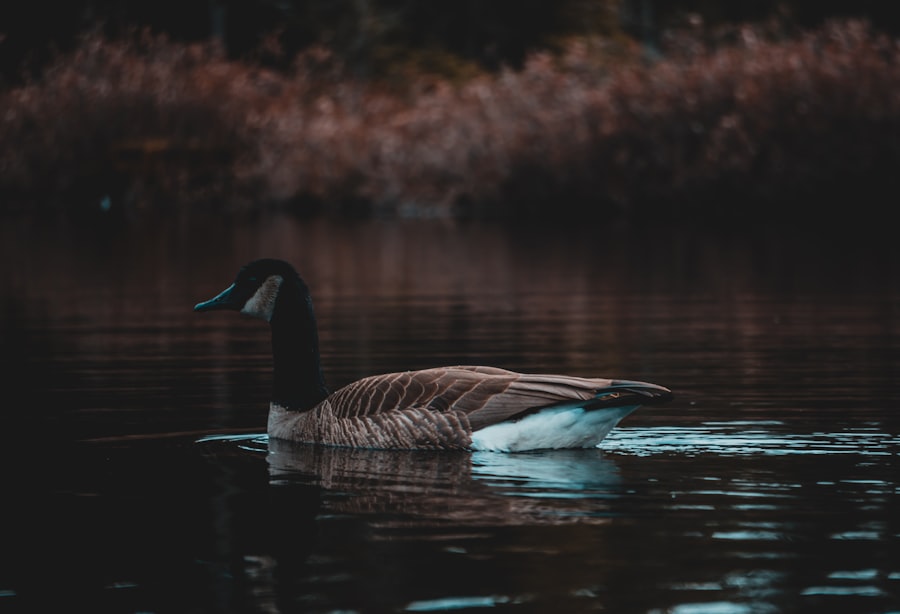
Motion-activated sprinklers are another method of deterring geese. These devices use motion sensors to detect the presence of geese and then activate a sprinkler system that sprays water in their direction. The sudden burst of water startles the geese and makes them feel unsafe, causing them to avoid the area.
The advantage of using motion-activated sprinklers is that they are highly effective in deterring geese. They provide an immediate response to the presence of the birds and can cover a large area. They are also non-toxic and do not harm the geese or other wildlife. However, there are some disadvantages to using motion-activated sprinklers. They may not be suitable for all areas, especially if there is limited access to water or if there are structures that could be damaged by the water spray.
Geese Repellent Gels and Sprays
Geese repellent gels and sprays are another option for deterring geese. These products create a sticky or slippery surface that makes it difficult for geese to walk or land on. The gels and sprays can be applied to grass, plants, or other surfaces to create a barrier that geese will avoid.
The advantage of using repellent gels and sprays is that they can be highly effective in deterring geese from an area. They create a physical barrier that makes it uncomfortable for the birds to walk or land on. However, there are some disadvantages to using repellent gels and sprays. They may need to be reapplied regularly, especially after rain or irrigation, and they can be harmful to other wildlife or pets if ingested.
Electronic Geese Repellents
Electronic repellents are devices that emit sounds or vibrations that are designed to deter geese. These devices can be placed in areas where geese are a problem and can create a sense of discomfort or danger for the birds.
The advantage of using electronic repellents is that they are non-toxic and do not harm the geese or other wildlife. They can also cover a large area and are relatively easy to install. However, there are some disadvantages to using electronic repellents. They may not be effective in all situations, especially if there are obstacles or structures that block the sound or vibrations. Additionally, geese may become habituated to the electronic repellents over time and learn to ignore them.
Geese Repellent Netting
Geese repellent netting is a physical barrier that can be used to keep geese away from certain areas. The netting is typically made of a strong material that is difficult for geese to penetrate or fly through.
The advantage of using netting is that it provides a physical barrier that prevents geese from accessing an area. It can be highly effective in deterring geese, especially if used in combination with other deterrent methods. However, there are some disadvantages to using netting. It can be expensive and time-consuming to install, especially for large areas. It may also require regular maintenance to ensure that it remains effective.
Combination Geese Repellent Techniques
Combining different geese repellent techniques can often be more effective than using a single method alone. Geese can become habituated to certain deterrents over time, so using a combination of methods can help prevent this from happening.
For example, combining natural deterrents such as planting tall grasses or shrubs with visual scare tactics such as reflective tape can create a multi-sensory deterrent that is more likely to deter geese. Similarly, combining motion-activated sprinklers with ultrasonic repellents can provide both a physical and auditory deterrent.
In conclusion, there are many different geese repellent techniques available that can help deter geese from an area. Natural deterrents, chemical repellents, ultrasonic devices, visual scare tactics, motion-activated sprinklers, repellent gels and sprays, electronic devices, netting, and combinations of these methods can all be effective in deterring geese. It is important to try different methods and combinations until finding the most effective one for a particular situation. By implementing effective geese repellents, property owners can prevent damage and maintain a clean and safe environment.
If you’re interested in learning more about keeping chickens, you might find this article on “How Long for Chicken Eggs to Hatch Naturally” from Poultry Wizard quite informative. It provides valuable insights into the natural hatching process of chicken eggs and offers helpful tips for successful incubation. Whether you’re a beginner or an experienced chicken keeper, understanding the timeline and factors affecting egg hatching can greatly enhance your poultry breeding endeavors. Check out the article here to expand your knowledge on this fascinating topic.
FAQs
What are some effective ways to keep geese away?
There are several effective ways to keep geese away, including using decoys, installing fencing, using repellents, and modifying the landscape.
What types of decoys can be used to keep geese away?
Decoys that resemble predators, such as coyotes or foxes, can be effective in deterring geese. Decoys that resemble other birds, such as swans or herons, can also be effective.
What types of fencing can be used to keep geese away?
Fencing that is at least 3 feet tall and has small mesh openings can be effective in keeping geese out. Electric fencing can also be effective.
What types of repellents can be used to keep geese away?
Repellents that contain methyl anthranilate, a grape extract, can be effective in deterring geese. Other repellents include those that contain capsaicin, a compound found in hot peppers, and those that emit loud noises.
How can the landscape be modified to keep geese away?
Modifying the landscape by removing or trimming vegetation near water sources, installing barriers to prevent geese from accessing water, and creating steep banks or shorelines can be effective in deterring geese.
Meet Walter, the feathered-friend fanatic of Florida! Nestled in the sunshine state, Walter struts through life with his feathered companions, clucking his way to happiness. With a coop that’s fancier than a five-star hotel, he’s the Don Juan of the chicken world. When he’s not teaching his hens to do the cha-cha, you’ll find him in a heated debate with his prized rooster, Sir Clucks-a-Lot. Walter’s poultry passion is no yolk; he’s the sunny-side-up guy you never knew you needed in your flock of friends!

